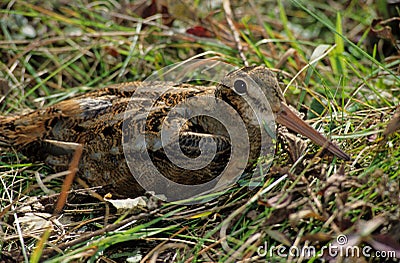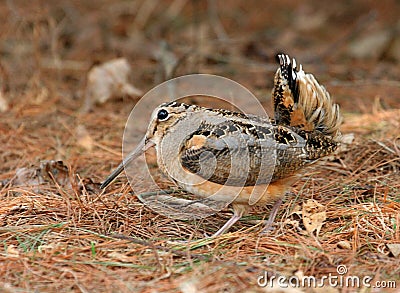Serious bird hunters employ serious hunting dogs, and no hunting dogs are as serious as those in the class known as the pointing breeds.
Pointing dogs possess a unique instinctual characteristic. As is virtually universal among canines, pointers use their keen sense of smell to aggressively and enthusiastically locate game. When a pointer senses quarry in his immediate vicinity however, a counter-intuitive reaction occurs. The dog freezes. Every muscle the dog's body goes rigid. His tail stands up fire-poker straight, and his whole body remains stone solid ("on point" we say) -- locked in a standoff with the bird's indecision over whether to stay and hide, or flee. The hunter's job then is to interrupt this standoff, step in, compel the bird to fly, and take his game on the wing. Alternately, (if the hunter is yours truly) his job is to step in, compel flight, and salute the spirit of wild freedom with twin shotgun blasts, as his quarry glides away to safety!
A dog on point in a thick field or forest presents certain difficulty: namely finding the dog! A hunting dog doesn't do us much good by knowing the location of a bird if we don't know the location of the dog. Fortunately, human ingenuity stepped in with a marvelous piece of technology known as the "beeper/locator," or "beeper collar." This simple device contains a toggle switch which, when the dog is in motion, keeps the beeper silent. However, when the dog freezes, the toggle stops moving and the device begins to beep, indicating the dog's (and hopefully the bird's) location. There is nothing, NOTHING that quickens a bird hunter's pulse like the silence of the wilderness interrupted briefly but suddenly by the beep of his dog's locator collar.
While undoubtedly a thing of genius, there is one significant shortcoming in the design of the beeper collar. It lacks discernment. A pointing dog's dedication to hunting is an unholy possession. The dog is fixated on his task, and
almost nothing can interrupt his steady and methodical search for game. That "
almost" is (finally!) the subject of this blog entry.
The scene is this: Hunter and dog move through the woods as symbiotes. They are keenly aware of their interdependence and keep close tabs on one another. The hunter tracks his dog with an ear to the moving brush, and the dog periodically "checks in" by momentarily coming close to the hunter before venturing out to resume his search.
Abruptly, the dog's movement stops. The hunter's breath catches in his chest as the click of a second hand echos through eternity. Then comes the audible adrenaline jolt. The hunter's pace quickens, and he looks for a clear path to the source of the beep. Branches slap him in the face. Thorns tear at his clothing and the flesh beneath, yet he hardly notices. He scans the cover for his dog, planning his approach, visualizing the flush, the shot, the recovery, the glory!
As his eyes locate the canine source of his manic searching, the hunter discovers he's been duped. The tell-tale beeps do not indicate a climax in nature's primal drama of predator vs. prey. The dog
has stopped, and is relatively still. However, the hunter finds his dog contorted: nose up, rump down, engaged in another very
anti-climactic, albeit very natural process -- the result of which is nothing you want to stuff in your game vest (YUCK!).
It's what members of my hunting party refer to as a "south point."
To have one's high hopes dashed by this unsavory act is, simply put, a unique kind of disappointment.






